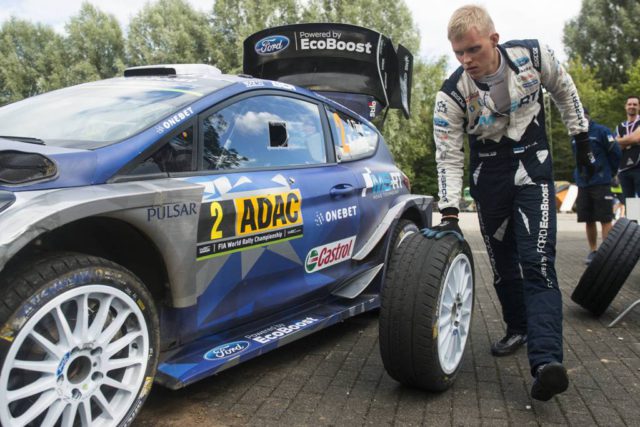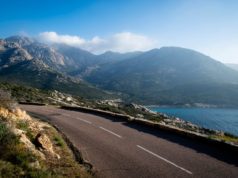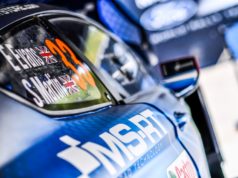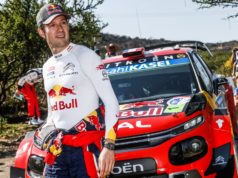The FIA World Rally Championship, we’re regularly told, has three surfaces: snow; gravel and asphalt. Right? Absolutely. Except for Rallye Deutschland. In Germany, there are any number of surfaces. That’s what makes this event unique.
Regularly labelled, ‘just another tarmac rally,’ Germany couldn’t be more different from the twists and turns of Corsica or the circuit smooth curves of Catalunya.
The surface of last week’s 10th round of this year’s WRC changed on a daily basis. Sometimes it changed in the middle of a day, forcing the teams to tweak and fettle the cars more than on any other single event in the series.
What works in terms of set-up on the country roads dissecting the farms and fields of Saarland would leave a crew nowhere when it comes to the rough and rocky Baumholder tests – a place so tough it’s used by the American military to test their tanks.
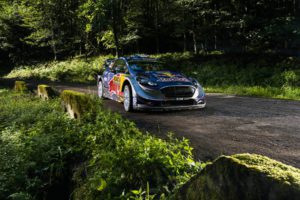 And then there are the vineyards of the Mosel valley. These lanes are left as narrow as possible to pack in and pull out as much Riesling and Pinot Gris per square metre as possible.
And then there are the vineyards of the Mosel valley. These lanes are left as narrow as possible to pack in and pull out as much Riesling and Pinot Gris per square metre as possible.
Yet World Rally Cars thunder through this grape-growing nirvana at close to 200kph. And to do so, they need absolute precision from the firmest of race cars. Take this set-up to Panzerplatte and you’d be bouncing off the Hinkelsteins in no time.
Hinkelsteins have become a natural hazard on the rally’s Baumholder day – they’re the gigantic rocks at the side of the road. And they’re there to keep fully loaded 60-tonne Abram tanks on the straight and narrow, making a 1200-kilo World Rally Car easy meat.
Chris Williams is M-Sport’s head of rally engineering and he knows this rally of old – he’s been coming here along with the World Rally Championship for the last 15 years.
“When you prepare for this rally, you prepare for three rallies,” says Williams. “We know we have to test the pure vineyard road, the country roads with a lot of square corners and then in Baumholder. Unfortunately, there’s not one test road that goes through all of those venues – so it’s separate tests.
“For the stages in Baumholder we run the car higher because the surface is a bit rougher and we have different control strategies for the car in the vineyards. I suppose from the country roads we can take some data from Spain and Corsica, where there are elements which are similar. But the other two types of road are unique to here and you absolutely have to get it right.”
Williams and his M-Sport World Rally Team got it absolutely right last weekend, with Ott Tanak and Sebastien Ogier finishing first and third in their Ford Fiesta WRC
“The drivers have to make set-up changes to the car between stages,” says Williams. “There’s nothing uncommon in that, but these are bigger changes that have more of an effect on the car than any other rally.”
 Before the bounce through Baumholder, the cars were fired through the vineyards, where they hairpin their way up and down the valley.
Before the bounce through Baumholder, the cars were fired through the vineyards, where they hairpin their way up and down the valley.
Here, the handbrake is the driver’s best friend, along with a control strategy from the car to literally launch this near 400bhp missile from corner to corner with complete traction and total automotive aggression.
Co-driver Stuart Loudon was working on M-Sport’s weather co-ordination in Germany, but he’s experienced this rally from inside the car
The German weather made tyre choice a tricky one this morning. We’ve gone with a mix – let’s see if we got it right… #WRC #ADACRallye ☔️ pic.twitter.com/mBO1Alwh0u
— M-Sport (@MSportLtd) August 18, 2017
“The vineyard stages can be quite brutal,” Loudon says, “you’re carrying a lot of speed and then there are these periods of really heavy, heavy braking. And all the time you’re trying not to look down over the edge – there are some serious drops when you get up among the higher vines.”
Get it wrong and you’ll crush grapes all the way down to the Mosel River waiting at the bottom.
“This one is a complicated rally,” says Williams. “But what makes it more complicated is the weather.”
And that was certainly true last week. A day one downpour turned the roads into rivers.
“We have an emergency wet set-up in the car,” says Williams, “so the guys can get out and make changes to the ride heights, roll-bar stiffness, work on the dampers and make changes to the centre differential strategy – all of this will give the car more traction in the wet.”
Nobody called Friday’s wet stages better than Tanak
Colluding closely with Loudon on when, where and how much the rain would fall, the Estonian bolted on Michelins most extreme wet weather tyres, went out and won the rally.
“It was that choice that made the difference,” says Tanak. “Having the right set-up and putting the right tyres on for that loop, that’s what won us this rally.”
That winning feeling! ? ? #WRC #ADACRallye pic.twitter.com/JbP9aI3D3e
— M-Sport (@MSportLtd) August 20, 2017






















